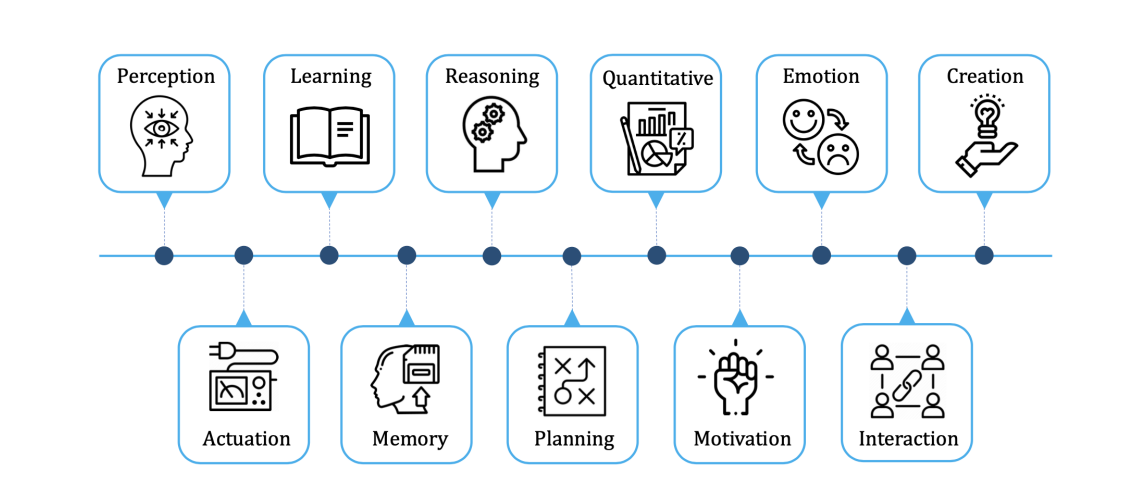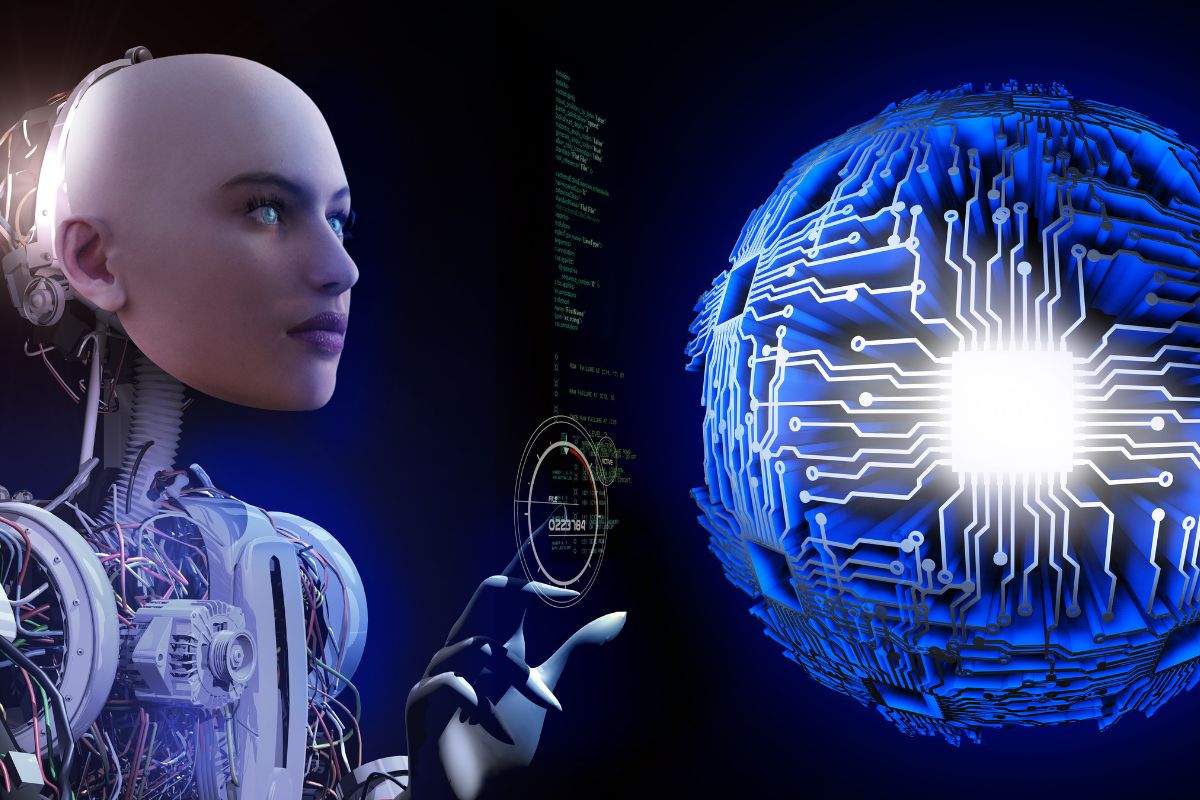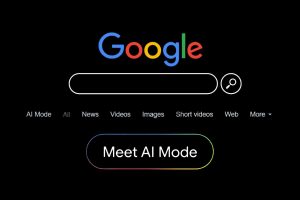If you are unaware of the ongoing controversy around OpenAI and Elon Musk on refining AGI, then you probably live under a rock. But why is AGI so important? And why are we discussing IoT use cases for it?
Artificial General Intelligence, or AGI, is an AI model developed to perform any task humans can do. This includes the current capabilities of generative AI like text-to-image, text-to-video, and multi-modal capabilities.
The evolution of IoT development has reshaped data analytics for businesses. With AGI, data from IoT devices is transformed into cutting-edge business intelligence, surpassing traditional analytical tools.
This article delves into how AGI revolutionizes IoT development, empowering businesses with unparalleled insights to elevate customer experiences.
Rise of AGI: Why is it The Next Big Bang of Technology?
The generative AI boom with the introduction of ChatGPT has reached a tipping point. More prominent players in the AI boom, like OpenAI, Microsoft, Google, and Anthropic, are all developing new models with multi-modal capabilities.
AGI is one of the most exciting concepts in the development of AI. The core hypothesis of AGI is to develop a system based on the creation and study of synthetic intelligence. It will be trained in a broader scope with strong generalization capabilities.

Here are some key capabilities that AI researchers characterized for rise of AGI:
- Perception- Ability to sense and understand visual, hearing, or touch information from a specific environment. Further, it can integrate multi-modal data from different senses into the AI model.
- Actuation- AGI can manipulate physical objects using tools and navigation, especially in the context of robotic activities.
- Reasoning- The ability to deduce, induce, and abduct data allows AGI to make spatiotemporal associations.
- Planning- The ability to conduct strategic, physical, and social planning.
The above capabilities are hypothetical and currently under development. But if AI-based giants like OpenAI can achieve, such capabilities can transform how businesses operate. However, this article focuses on the impact of AGI on IoT.
So, let’s understand how AI has changed how IoT devices operate.
AI and IoT: A significant entanglement of technologies
The recently concluded Mobile World Congress in Barcelona had several projects showcasing AI-based IoT use cases. With over 40 sessions at the event focussing on AI, use cases were endless.
What’s clear from the several use cases of AIoT in the MWC is an attempt to build an innovative, connected ecosystem. Indeed, the combination of AI and IoT, or AIoT, has the potential to transform operational capabilities across various industries.
With telecom giants displaying 5G capabilities at events like the Mobile World Congress, the possibilities for innovative and connected ecosystems are endless. By enabling different AI models for enhanced operations, businesses can leverage the power of AIoT to gather, analyze, and process data.
So, how is AIoT different from existing IoT systems?
An example is a supply chain and logistics company delivering temperature-sensitive food items. If the temperature of the cargo does not meet the requirements, it can lead to financial losses. The conventional setup has IoT devices recording temperature differences, allowing operators to manage them along the supply chain.
However, the software may help remotely execute such operations; variables the temperature can be many. So, if you don’t have enough data. This is where AI capabilities come into play.
It can help in
- Understanding the environment around cargo throughout the supply chain
- Gather and analyze different variables
- Providing insights to automate temperature management
- Automatically managing scheduling, delivery, and fulfillment
- Reduce manual errors and enhance operational capabilities.
But then, is AI capable of all of the above?
This is where AGI becomes crucial!
AGI can make AIoT efficient: Understanding the use cases
AGI can contribute heavily to improving the capabilities of AIoT. Right from healthcare to education and supply chain management, AGI can help AIoT with advanced features like predictive analytics, quick response to changes in a real-time environment, and more.
AGI for healthcare IoT
Healthcare IoT use cases range from wearables to remote heart rate monitoring devices. However, AIoT has brought on board many organizations and healthcare service providers the ability to have real-time data insights.
Take, for example, the cancer detection algorithms Dr. Éva Ambrózay uses in Budapest. Despite being examined by two radiologists earlier, the cancer detection happened only after a body scan by an AI model flagged some concerning areas.
While AIoT is already changing the way healthcare services operate, AGI can take this a notch up. For example, if surgeons and healthcare experts use robotics for surgeries, understanding the status of the human body is essential. AGI’s capabilities to understand the environment and create a response accordingly can help improve surgery efficiency.
AGI-based IoT devices can also assist in understanding organ functions and status in patients for effective diagnosis. Similarly, AGI can help manufacturing units manage automation and reduce accidents through enhanced IoT capabilities.
AGI-enabled manufacturing
AI-based manufacturing has been gaining traction recently with the introduction of generative capabilities in robots. The blend of AI-powered robotics and IoT devices has helped businesses reduce the cost of breakdowns.
Unplanned downtime can cost businesses up to $50 billion a year, and that is where AGI-based IoT devices can make all the difference through predictive maintenance. While predictive maintenance is not limited to manufacturing units, it can help reduce the cost of downtime for organizations.
AGI-enabled IoT devices can deduct environmental changes, learn adaptive practices, and automate implementations to ensure optimal operations. In other words, IoT devices can predict breakdowns in advance, allowing you to plan preventive measures.
Similarly, AGI-based IoT devices can also help you gather, analyze, and process data from multiple sources to forecast demand. This is crucial for manufacturing plants, as it can predict the need for specific raw materials and resources to meet market demands.
AGI-enabled agriculture
A key challenge for most agriculture professionals and farmers is to monitor the deteriorating soil quality and ensure optimal irrigation to avoid crop damage. It is a process that requires intelligent IoT devices that can record data continuously. However, analyzing data from multiple IoT devices spread across the land and ensuring real-time response for optimal farming is challenging.
AGI can enhance the capabilities of IoT devices to not only record data but also process and analyze them locally, providing real-time insights. Leveraging such insights, farmers can adjust irrigation approaches, adopt new farming practices, and improve the yield quality.
The future of General Intelligence (GI) in IoT
The advent of quantum computing is already transforming computing capabilities, which is crucial for AGI’s development. Developing general intelligence capabilities for AI and integrating it into IoT devices can open up new avenues of increased efficiency and cost optimizations.
AGI can help businesses leverage advanced AIoT strategies for more competent predictive maintenance, efficient anomaly detections, and operational efficiency. So, if you are a business planning to leverage AIoT, the future looks brighter with the rise of AGI.












